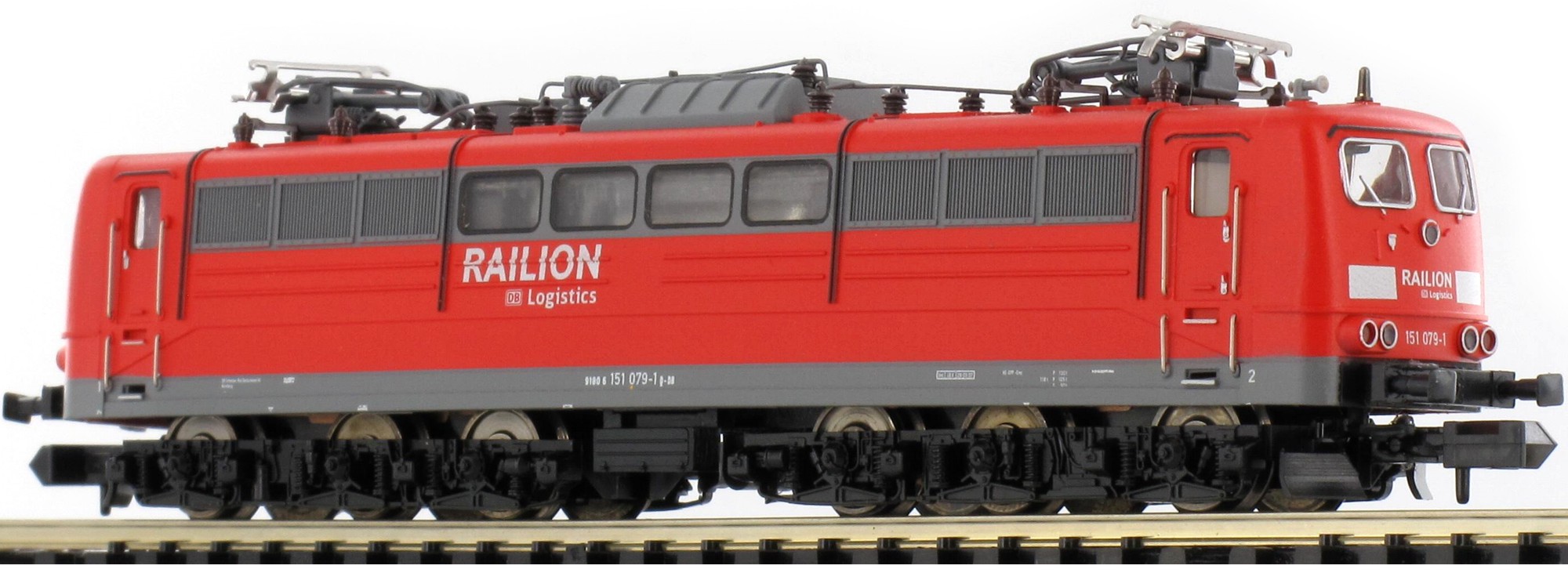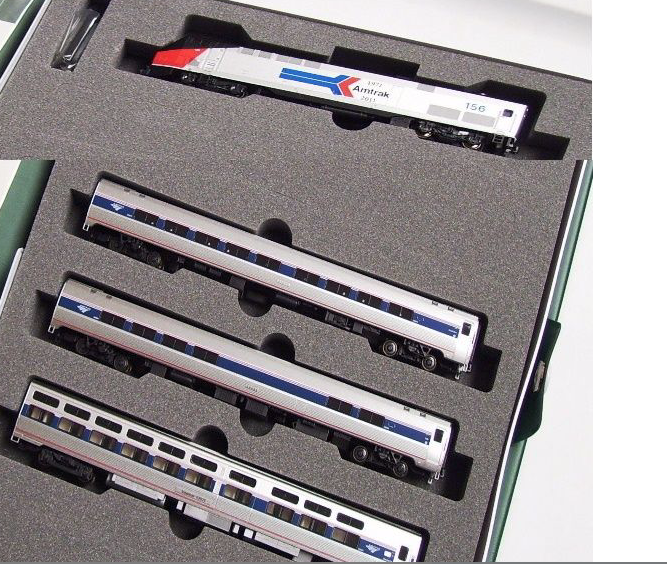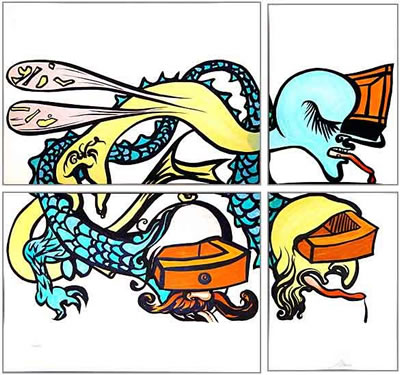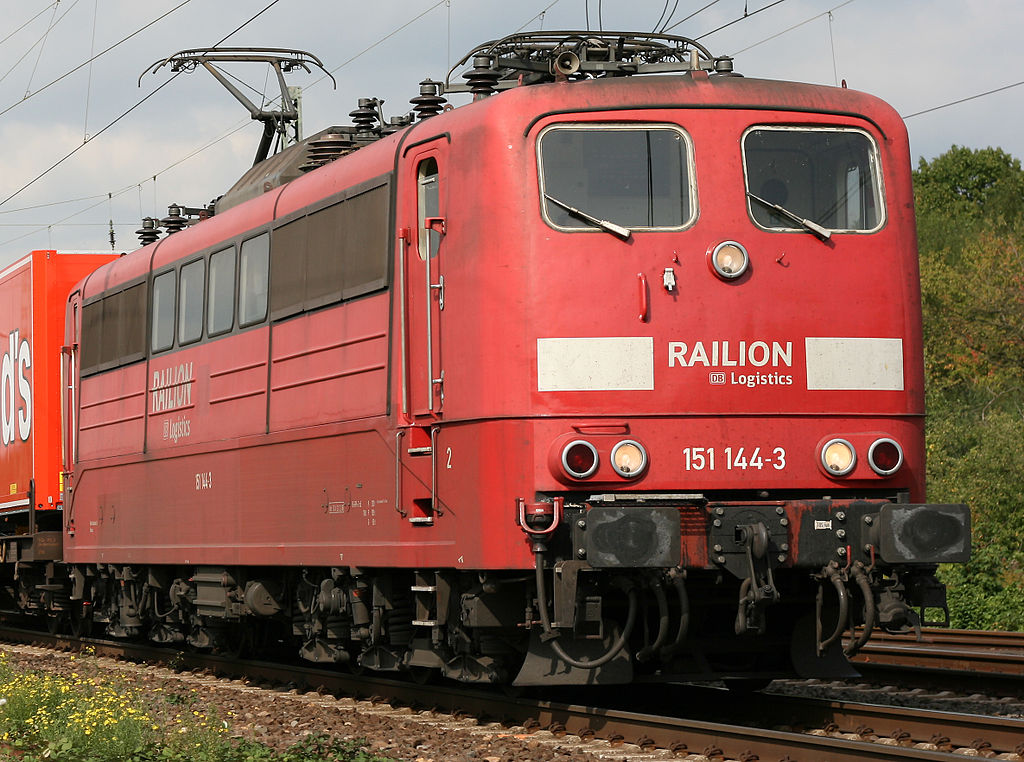Minitrix - 16491 - Locomotive, Electric, DB 151 - Railion
Click to see the details
market
| Stock Number | 16491 |
| Original Retail Price | 229.99€ |
| Brand | Minitrix |
| Manufacturer | Minitrix |
| Body Style | Minitrix Electric Locomotive DB 151 |
| Prototype Vehicle | Locomotive, Electric, DB 151 (Details) |
| Road or Company Name | Railion (Details) |
| Paint Color(s) | Red and Gray |
| Print Color(s) | White |
| Coupler Type | Rapido Hook |
| Coupler Mount | Body-Mount |
| Wheel Type | Chemically Blackened Metal |
| Wheel Profile | Small Flange (Low Profile) |
| DCC Readiness | DC/DCC Dual Mode Decoder |
| Release Date | 2014-01-01 |
| Item Category | Locomotives |
| Model Type | Electric |
| Model Subtype | DB |
| Model Variety | Class 151 |
| Prototype Region | Europe |
| Prototype Era | EU Epoch IV (1968 - 1985) |
| Years Produced | 19702- 1978 |
| Scale | 1/160 |
| EAN/JAN/GTIN13 Number | 4028106164910 |
Specific Item Information:
Heavy freight locomotive class 151 of the German course AG (DB AG). Traffic red basic coloring. Operating condition around 2013. Use: freight trains.
The locomotive has a built-in digital decoder for operation with DCC, Selectrix, and Selectrix 2. The motor has a flywheel. 4 axles powered. Traction tires. The triple headlights and dual red marker lights change over with the direction of travel and can be turned off. The locomotive has a close coupler mechanism. Length over the buffers 122 mm / 4-13/16".
The locomotive has a built-in digital decoder for operation with DCC, Selectrix, and Selectrix 2. The motor has a flywheel. 4 axles powered. Traction tires. The triple headlights and dual red marker lights change over with the direction of travel and can be turned off. The locomotive has a close coupler mechanism. Length over the buffers 122 mm / 4-13/16".
Prototype History:
The Class 151 is an electric heavy freight locomotive built for German Federal Railways between 1972 and 1978. They were built as a replacement for the ageing Class 150, in order to cope with the increased requirements of this type of locomotive, in particular the desire of a 120 km/h (75 mph) top speed.
On 21 November 1972 the first locomotive, 151001, was delivered by AEG and Krupp. It was followed by 11 further pilot locomotives, which were extensively tested before the main order was built. Altogether 170 locomotives were ordered, which were based at first in Hagen and Nuremberg.
Originally the Class 151 was also suitable for passenger service, however it is now not possible due to not having required safety equipment. Some engines were fitted with automatic coupling (type unicupler AK69e) to haul heavy ore-trains.
On 21 November 1972 the first locomotive, 151001, was delivered by AEG and Krupp. It was followed by 11 further pilot locomotives, which were extensively tested before the main order was built. Altogether 170 locomotives were ordered, which were based at first in Hagen and Nuremberg.
Originally the Class 151 was also suitable for passenger service, however it is now not possible due to not having required safety equipment. Some engines were fitted with automatic coupling (type unicupler AK69e) to haul heavy ore-trains.
Road Name History:
On January 1, 2000, Railion GmbH, headquartered in Mainz, Germany, was set up by Deutsche Bahn AG and the Dutch company Nederlandse Spoorwegen (NS) to provide rail freight transport activities as 100% subsidiary companies of Railion GmbH. DB Cargo became Railion Deutschland AG and NS Cargo became Railion Benelux NV. Later this company was renamed Railion Nederland NV.
In December 2007 Railion became part of the DB Schenker logistics group, itself a subsidiary of Deutsche Bahn. In early 2009 the now larger division was renamed DB Schenker Rail, and once again in 1 March 2016 to its current name, DB Cargo.
DB Cargo is a European (mainly German) railway cargo carrier. The company was formed from the freight operating section of the Deutsche Bahn with the addition of various European rail freight operating companies.
Read more on Wikipedia.
In December 2007 Railion became part of the DB Schenker logistics group, itself a subsidiary of Deutsche Bahn. In early 2009 the now larger division was renamed DB Schenker Rail, and once again in 1 March 2016 to its current name, DB Cargo.
DB Cargo is a European (mainly German) railway cargo carrier. The company was formed from the freight operating section of the Deutsche Bahn with the addition of various European rail freight operating companies.
Read more on Wikipedia.
Brand/Importer Information:
Trix is a German company that originally made Trix metal construction sets. one of its co-founders was Stephan Bing, the son of the pioneer toy-maker industrialist Ignaz Bing. In 1935 the company began producing the electrically powered model trains that it became famous for, under the Trix Express label. Prior to the outbreak of World War II the Trix company produced a small range of fairly unrealistic AC powered three rail models running at 14 volts.
N gauge models under the Minitrix brand were made from the late 1960s mostly of European prototypes (German and British primarily). North American prototypes were also manufactured and marketed under the Aurora "Postage Stamp" brand; later these items were sold under the American Tortoise, Model Power and Con-Cor brands. Trix sometimes utilized North American consultants to aid in the design of this portion of the product line. The "Hornby Minitrix' brand was used in the 1980s for a short lived range of British outline models using the earlier product tooling.
Trix's owner in the 1980s and 1990s was Mangold, which went bankrupt in the late 1990s and Märklin purchased the assets in January 1997. In part, this purchase was a reflection of Märklin's need for added production capacity; Trix had been manufacturing certain items for Märklin in previous years. The purchase was also in response to the earlier purchase of the Karl Arnold company by the Italian company Rivarossi; Märklin were very keen to take over Trix market share in 2-rail H0 and especially Minitrix, until then Märklin had not marketed N gauge models. In 2003, Märklin introduced its first N gauge models under the well established Minitrix brand. A number Märklin H0 scale three-rail AC locomotives have also been introduced in two-rail DC versions under the Trix logo and many models are shared between the two brands.
From Wikipedia
N gauge models under the Minitrix brand were made from the late 1960s mostly of European prototypes (German and British primarily). North American prototypes were also manufactured and marketed under the Aurora "Postage Stamp" brand; later these items were sold under the American Tortoise, Model Power and Con-Cor brands. Trix sometimes utilized North American consultants to aid in the design of this portion of the product line. The "Hornby Minitrix' brand was used in the 1980s for a short lived range of British outline models using the earlier product tooling.
Trix's owner in the 1980s and 1990s was Mangold, which went bankrupt in the late 1990s and Märklin purchased the assets in January 1997. In part, this purchase was a reflection of Märklin's need for added production capacity; Trix had been manufacturing certain items for Märklin in previous years. The purchase was also in response to the earlier purchase of the Karl Arnold company by the Italian company Rivarossi; Märklin were very keen to take over Trix market share in 2-rail H0 and especially Minitrix, until then Märklin had not marketed N gauge models. In 2003, Märklin introduced its first N gauge models under the well established Minitrix brand. A number Märklin H0 scale three-rail AC locomotives have also been introduced in two-rail DC versions under the Trix logo and many models are shared between the two brands.
From Wikipedia
Item created by: gdm
on 2019-09-01 09:41:43
If you see errors or missing data in this entry, please feel free to log in and edit it. Anyone with a Gmail account can log in instantly.
If you see errors or missing data in this entry, please feel free to log in and edit it. Anyone with a Gmail account can log in instantly.











